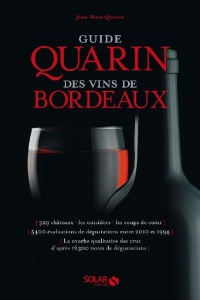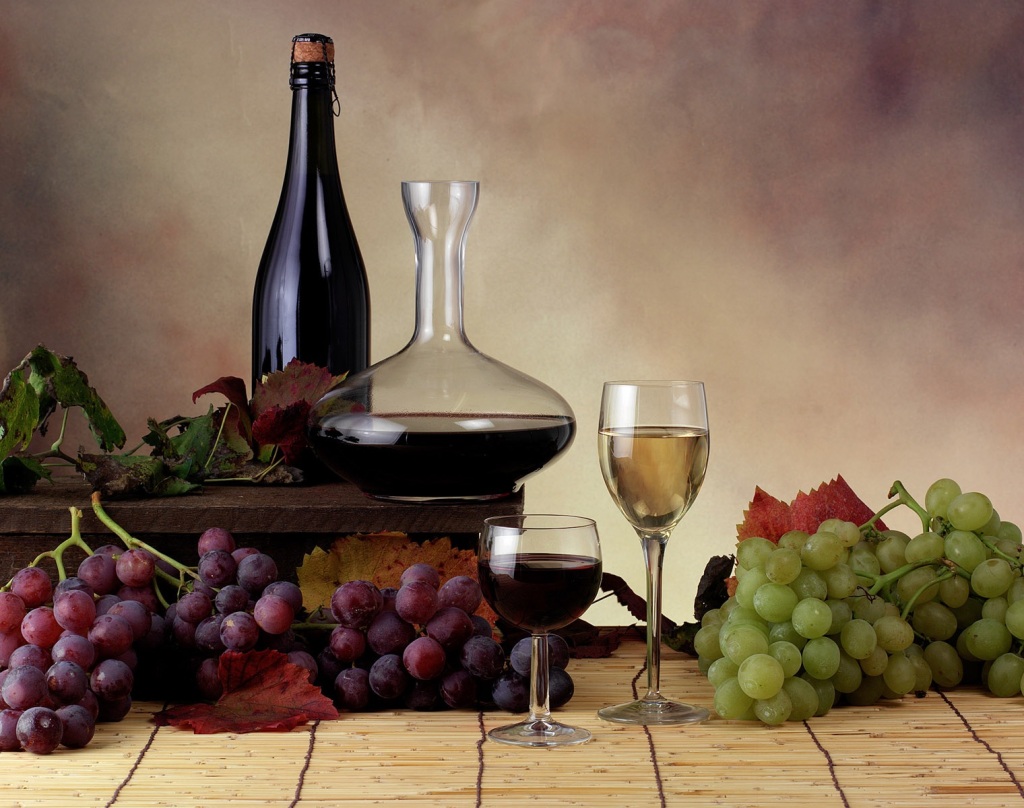![]() Je converse au téléphone avec un abonné. On parle de châteaux et de millésimes. Au fil de la conversation, il me dit ne pas apprécier le Saint-Pierre 2002 malgré ma bonne note. Je lui demande s’il pourrait expliquer d’où vient son insatisfaction. Il le fait très précisément en mentionnant la platitude du vin en milieu de bouche.
Je converse au téléphone avec un abonné. On parle de châteaux et de millésimes. Au fil de la conversation, il me dit ne pas apprécier le Saint-Pierre 2002 malgré ma bonne note. Je lui demande s’il pourrait expliquer d’où vient son insatisfaction. Il le fait très précisément en mentionnant la platitude du vin en milieu de bouche.
Je lui précise que Saint-Pierre ressemble plus à la structure d’une droite qu’à celle d’une boule. Son style allongé, longiforme sans être maigre, pourrait ne pas lui plaire.
— «Si », me répond-il « j’aime le Saint-Pierre, mais pas le 2002 »
Intrigué, je me pique à ce jeu de l’analyse des symptômes de cette défaillance. Je sais pour le connaître que Saint-Pierre 2002 ne faiblit pas en milieu de bouche au point de se le représenter comme plat. Et puisque ce client aime généralement ce cru, c’est dans la bouteille ou sa préparation que s’origine le problème. D’emblée, on écarte la différence existant d’une bouteille à l’autre. M. X a plusieurs fois goûté le vin de la même manière. Je l’interroge alors sur la température du service, sur sa cave, sur ses lieux d’achats. L’homme semble très averti. Tout est normal. Pour finir, je lui demande, sans trop y croire tant il paraît sûr de lui, de quelle manière il sert ce vin. Il raconte alors, bon enfant, qu’il le transvase dans une carafe avant de le remettre dans la bouteille pour le servir, l’étiquette apparente. He he ! Le voici le mauvais coup !
A une aération bienfaitrice, notre homme en rajoute une seconde bien plus fatigante et décharnante pour la structure du vin. Elle écrête aussi toute son intensité aromatique.
Un peu incrédule, il m’explique qu’il voit tant de professionnels faire pareil qu’il ne pensait pas mal faire. Et il a raison.
Avant-hier, j’accompagnais un groupe de stagiaires d’un très bon niveau dans un cru classé. Nous goûtons 2006, 2005 et 2004. Dans ce cru, le 2004 représente un modèle aromatique où la pureté et la précision de la présence fruitée font merveille. La bouche, éclatante de fruit, suscite une forte envie d’avaler malgré la jeunesse et la densité du vin.
Au directeur qui nous reçoit, je demande s’il est possible de décanter. Comme le décanteur se trouve dans une pièce adjacente, il disparaît emportant la bouteille. Or il ne revient pas avec le décanteur. Il réapparaît avec le même vin dans la même bouteille. Je comprends très vite qu’il l’a double décanté. Je le goûte, et ne trouve plus le même vin présent quelques instants avant : le nez s’est affadi, a perdu de l’intensité et de la fraîcheur ; en bouche, le vin sèche en finale. Il ne ressemble plus au modèle d’équilibre et d’extraction que ce 2004 représentait.
Le directeur confirme la double décantation.
Je propose alors qu’une autre bouteille soit ouverte pour comparer. Nous voici donc avec un 2004 décanté à côté d’un autre double décanté, apparaissant toujours comme plus sec. Le directeur, très perplexe, sans doute même embarrassé, émet l’idée que ce n’est pas la double décantation qui assèche la finale, mais plutôt l’accumulation du tanin reçu lors de la dégustation du premier verre puis du second. En clair, il n’y croit pas ! Il met en cause celui qui reçoit le message (nous, indignes consommateurs qui vraiment ne connaissons rien au vin !) plutôt que la stimulation qui l’émet (la qualité du vin). Il renchérit même en indiquant qu’il conviendrait d’effectuer cette dégustation de façon triangulaire pour valider les conclusions.
-« Et pourquoi pas » dis-je pour le prendre au mot.
Nous voici donc devant trois verres, deux sont remplis avec le vin double décanté et l’autre avec le vin décanté. Le but de l’exercice est de trouver, à l’aveugle, celui ou ceux qui sont différents ou semblables.
 Je propose à deux participants à ce stage de formation au goût du vin de faire le test. Le premier, motivé et novice, échoue. Quoi de plus normal ? C’est la première fois qu’il vient. Il ne sait pas encore ce qu’il faut observer dans la bouche et surtout à quel moment. Mais ce directeur en sait-il plus ?
Je propose à deux participants à ce stage de formation au goût du vin de faire le test. Le premier, motivé et novice, échoue. Quoi de plus normal ? C’est la première fois qu’il vient. Il ne sait pas encore ce qu’il faut observer dans la bouche et surtout à quel moment. Mais ce directeur en sait-il plus ?
Le second, très assidu et expérimenté (plusieurs stages à son actif) n’a besoin que d’une minute pour trouver les bons résultats. Un régal pour ceux qui cheminent avec l’idée que le bon goût se découvre, s’apprend et peut se transmettre à d’autres pour peu que l’on veuille questionner la maladroite toute puissance de notre subjectivité. Oui, les goûts et les couleurs se discutent !
Jean-Marc QUARIN, critique oenologique
Pour plus d’information sur la double décantation, consultez le guide Quarin des vins de Bordeaux accessible sur Facebook et gagnez vous aussi une journée dans les plus grands crus avec Jean-Marc Quarin.
Guide Quarin des vins de Bordeaux: Disastrous double decanting or when taste is disputed
I am talking on the phone with a subscriber. We are talking about chateaux and years. In the course of the conversation, he tells me he does not like the Saint-Pierre 2002, despite my good grade. I ask him if he could explain the source of his dissatisfaction. He does so very precisely, mentioning the flatness of the wine in the middle of the mouth.
I explain to him that Saint-Pierre resembles more the structure of a straight line than that of a ball. Its elongated style and length, without being thin, could not please him.
— “Yes,” he responded, “I like Saint-Pierre, but not the 2002.”
Intrigued, I was taken with this game of analysing the symptoms of this deficiency. I know that Saint-Pierre 2002 does not go weak in the middle of the mouth to the point of being flat. And since this customer generally likes this vineyard, the origin of the problem lies within the bottle or its preparation. Right away, we dismiss the difference existing between one bottle and another. Mr X has tasted the wine several times in the same way. I then ask him about the temperature of the service, his cellar and the places where he shops. The man appears very informed. Everything is normal. To finish, I ask him, without thinking too much about it as he seems sure of himself, how he serves this wine. He tells me, my child, that he decants it in a carafe before returning it to the bottle to serve, with the label prominent. Aha! Herein lies the problem!
To the beneficial aeration, our friend adds a second one, which is quite a bit more tiring to and deflates the structure of the wine. It also eliminates its aromatic intensity.
Somewhat incredulous, he explained to me that he saw so many professionals do the same thing that he did not think he was doing wrong. He is right.
The day before yesterday, I accompanied a group of very high-level trainees to a cru classée. We tasted 2006, 2005 and 2004. In this vintage, the 2004 is an aromatic model where the purity and precision of the fruity presence work wonders. Bursting with fruit, the mouth elicits a strong desire to swallow, despite the youth and density of the wine.
I asked the director who received us whether it is possible to decant. As the decanter is in an adjacent room, he disappeared carrying the bottle. Yet, he did not return with the decanter. He reappeared with the same wine in the same bottle. I understood very quickly that he had double decanted. I tasted it and no longer found the same wine present a few seconds earlier. The nose faded, lost intensity and freshness. In the mouth, the wine finished dry. It no longer resembled the model of balance and extraction that this 2004 represented.
I offer it while another bottle is open for comparison. There we are, with a 2004 decanted beside another double decanted [2004], still appearing as dry. The very perplexed, no doubt embarrassed, director put forward the idea that it was not the double decanting that dries the finish, but rather the accumulation of tannin received when tasting the first glass then the second. To put it plainly, he did not believe it! He implicated the one receiving this message (we, unworthy consumers who truly know nothing about wine), rather than the stimulation it produces (the quality of the wine). He even went further, indicating that this tasting should be carried out in a triangular fashion to confirm the conclusions.
-“And why not,” I said to take the floor.
We have here before us three glasses. Two are filled with double decanted wine and the other with decanted wine. The goal of the exercise is to find, through blind tasting, the one or ones that are different or similar.
I suggest that two participants in this training on wine tasting do the test. The first, motivated and inexperienced, fails. What is more normal? It is the first time he has come. He still does not know what to observe in the mouth, and especially at what time. But does this director know more about it? The second, who is very diligent and experienced (several trainings under his belt), needed only a minute to find the right results. A delight for those who go along with the idea that good taste is discovered and learned and can be conveyed to others so that one wants to question the clumsy power of our subjectivity. Yes, tastes and colours are disputed!
Jean-Marc QUARIN, Wine Critic
For more information on double decanting, see the guide Quarin des vins de Bordeaux on Facebook and also win a day in the greatest vineyards with Jean-Marc Quarin.
Didier MOINEL DELALANDE




